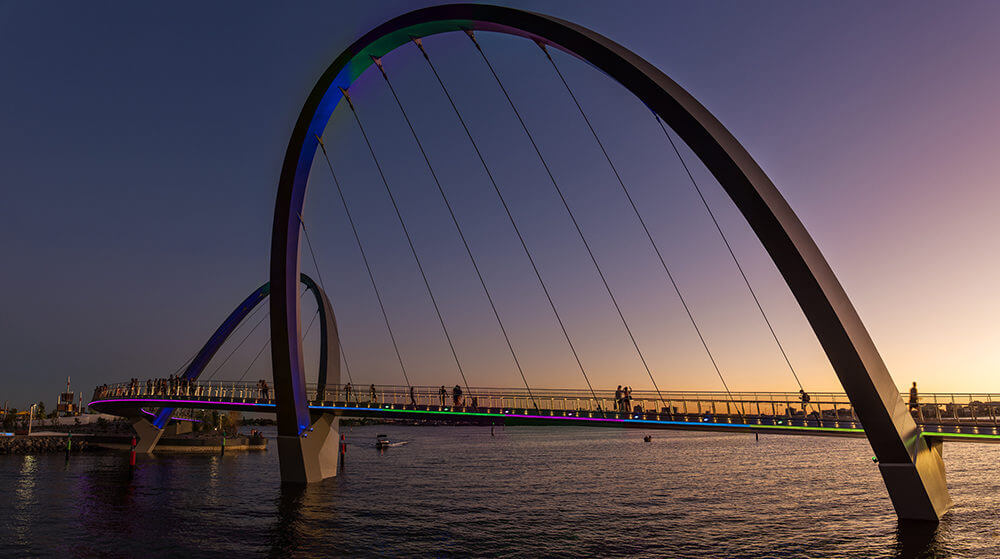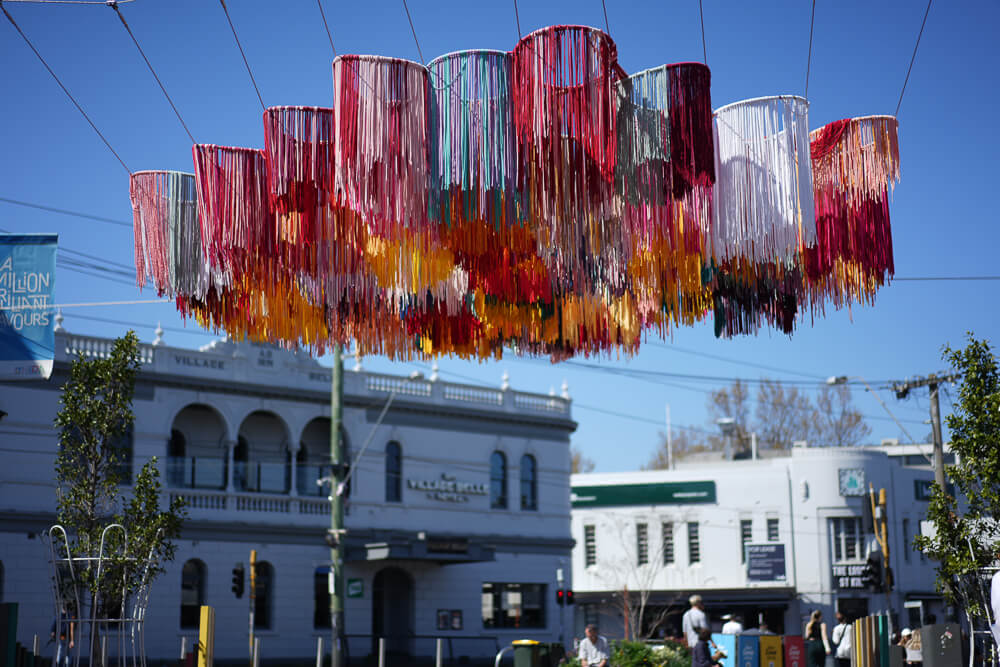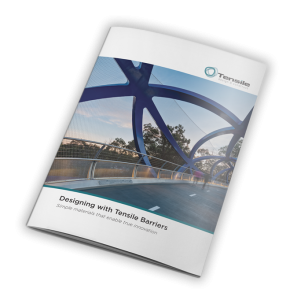Jakob stainless steel suspension cables and Webnet mesh can be used in a variety of ways in tensile structures. These materials are ideally suited to safety barriers, anti-throw screens, green facade supports, catenary lighting installations and elevated art installations.
Here are nine key reasons why!
1. Low maintenance needs
Jakob’s suspension cables and mesh are made from marine-grade stainless steel, which offers high resistance to corrosion. This means there’s little ongoing maintenance or cleaning required, which is a major cost saver.
An example is the five-level Webnet atrium barrier at the Melbourne School of Design. In the space of 10 years or so, only one problem has been detected with this barrier – and that was resolved within minutes!
2. Customisable and versatile
These products come in a variety of shapes and sizes, and they can be painted in a range of colours to match the project design or surrounding décor.
The benefit is the freedom of form the materials enable, which makes them suitable for a variety of very different projects. This includes structures with complex shapes or irregular geometries.
3. Excellent longevity and high strength
Jakob’s suspension cables and mesh are remarkably robust and long-lasting. If correctly engineered, the installation should last up to 25 years – maybe even longer in some cases!
This compares favourably to, say, Chainlink which comes with a warranty of only one year, and to Weldmesh and Kaynemaile which have lifespans of around 10 years.
Tensile materials are also very strong. For example, a 3mm cable has a breakage capacity of 520kg.
4. High transparency
Many projects require a material that will blend in with the architecture and not interrupt views or block light. Suspension cables and Webnet really excel in this as they provide tensile strength combined with a light and translucent appearance.
5. Excellent modularity
A modular approach can be used with the materials which allows for flexible design and easy assembly.
For example, on the Elizabeth Quay footbridge in Perth, Webnet was first sized into panels, then matched to the curvature of the structure and integrated into the balustrade.

6. Accommodates large spans
The suspension cables can be made virtually any length – even extending over several levels on a very tall building. Webnet also comes in very large spans or sheet sizes, making it suitable for large commercial barriers, security fences or ball catchers in sport stadiums.
7. Easy and quick to install
Being lightweight and flexible, these materials can make for a very fast and easy installation, sometimes taking only a matter of days. For example, the suspended art installation at Acland Street Village in Melbourne took only two days to install.
8. Non-climbable
A safety barrier needs to protect against falling, climbing and jumping. Using vertical cables (such as in the Melbourne Conservatorium atrium) can make for a fully non-climbable barrier. Webnet mesh can be made non-climbable by reducing the size of the mesh openings.
9. Integration capability
Integrating tensile architecture into solid conventional structures can come with some challenges as they are such different types of construction.
But when expertly engineered and correctly tensioned, stainless steel cable materials rise to the challenges – in turn allowing huge scope for project creativity.
Call us about suspension cables
There are many other features and benefits that come with suspension cables for tensile architecture – including good fire-resistance, easy replacement and no requirement for a sub-frame.
Call us today if you would like to know more about the use of suspension cables or Webnet in tensile architecture.






































